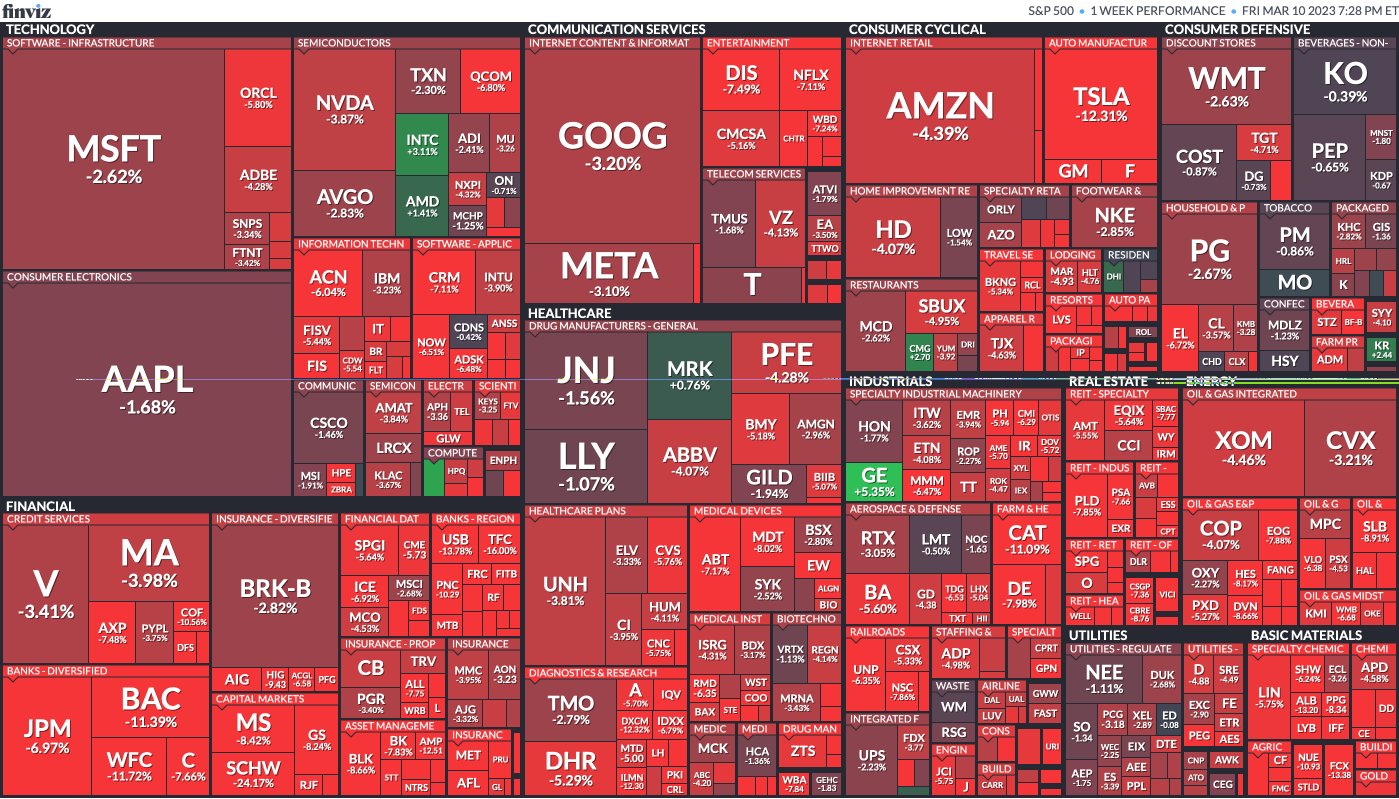GM Friends & Investors,
Bank of America's CEO, Brian Moynihan, has recently predicted that the United States will experience a technical recession by the third quarter.
Despite this news, Moynihan remains optimistic, stating that this recession will not be severe.
Moynihan also mentioned that Bank of America anticipates the Federal Reserve to commence with rate cuts in the second quarter of 2024.
Highlights:
📉SVB Going Under
💰The Savings Crisis
👮♀️More Regulations Inbound
S&P 500
The market sell-off that took place this week gained significant momentum yesterday as investors tried to make sense of comments made by the Federal Reserve regarding the persistent inflation that the economy is currently experiencing.
Investors are anxiously awaiting the release of critical employment data, which is expected to substantially impact the Fed's future rate decisions.
Thursday was a turbulent day for banks, particularly due to a disconcerting announcement made by Silicon Valley Bank (SVB Financial). The trading of SVB Financial's shares (SIVB -60.39%) was interrupted multiple times due to high volatility levels. This followed the announcement by the bank that it planned to raise more than $2 billion in capital to offset losses incurred from bond sales.
SVB Financial was the worst-performing stock in the S&P 500 index yesterday.
Economy

The Savings Debacle
There is a growing savings crisis in the United States, with American adults experiencing a decline in their savings accounts each year.
According to recent statistics, 39% of American adults currently have less emergency savings than they did in 2022, while 36% report that their credit card debt outweighs their emergency savings.
The primary causes of this savings depletion are inflation and debt. Since the early stages of the pandemic, Americans have struggled to keep up with the rollercoaster ride of inflation, and rising interest rates have only deepened the debt hole.
As of Q4 2022, the total amount of debt has reached alarming levels. Credit card debt stands at $986 billion, while student loans and auto loans are at $1.60 trillion and $1.55 trillion, respectively.
Around the World

Climbing the Ladder
Santander Executive Chair Ana Botin recently stated that the finance industry needs to accelerate the process of promoting women to management positions.
As one of Europe's largest banks, Santander is taking steps to help women ascend to the top, including rotating job roles.
"We're making a significant effort, but we must ensure we do it in the right way," Botin emphasized.
According to research from Deloitte in 2022, women held only 21% of board seats within financial services institutions worldwide, with a mere 5% in CEO positions. This highlights the need for more significant efforts to address gender inequality in the finance industry.
Crypto

Regulations are Coming
U.S. lawmakers have reintroduced a bill aimed at changing how cryptocurrencies are taxed.
Known as the "Keep Innovation in America Act," the bill would redefine a crypto broker as "any person who (for consideration) stands ready in the ordinary course of a trade or business to effect sales of digital assets at the direction of their customers."
The issue is that lawmakers believe the current definition suppresses innovation in the crypto sector since miners, validators, and hardware/software developers are currently not covered by the definition.
According to the bill, the reporting requirements under current law are incompatible with the technology's operation, which hinders the development of digital assets and their underlying technology in the United States. Therefore, the bill aims to adjust the current definition to allow for more innovation and growth within the crypto sector.
Real Estate
A report from Realtor.com has shown that the U.S. is facing a shortfall of 6.5 million single-family homes.
The reason for this shortfall is that over the past decade, the U.S. has been building fewer homes relative to population growth. In other words, there aren't enough new homes being constructed to accommodate the number of people seeking homes.
Realtor.com notes that slower single-family construction, cooling buyer demand, and declining builder confidence have led to a shift in builder focus towards multi-family homes in the past year.
****





